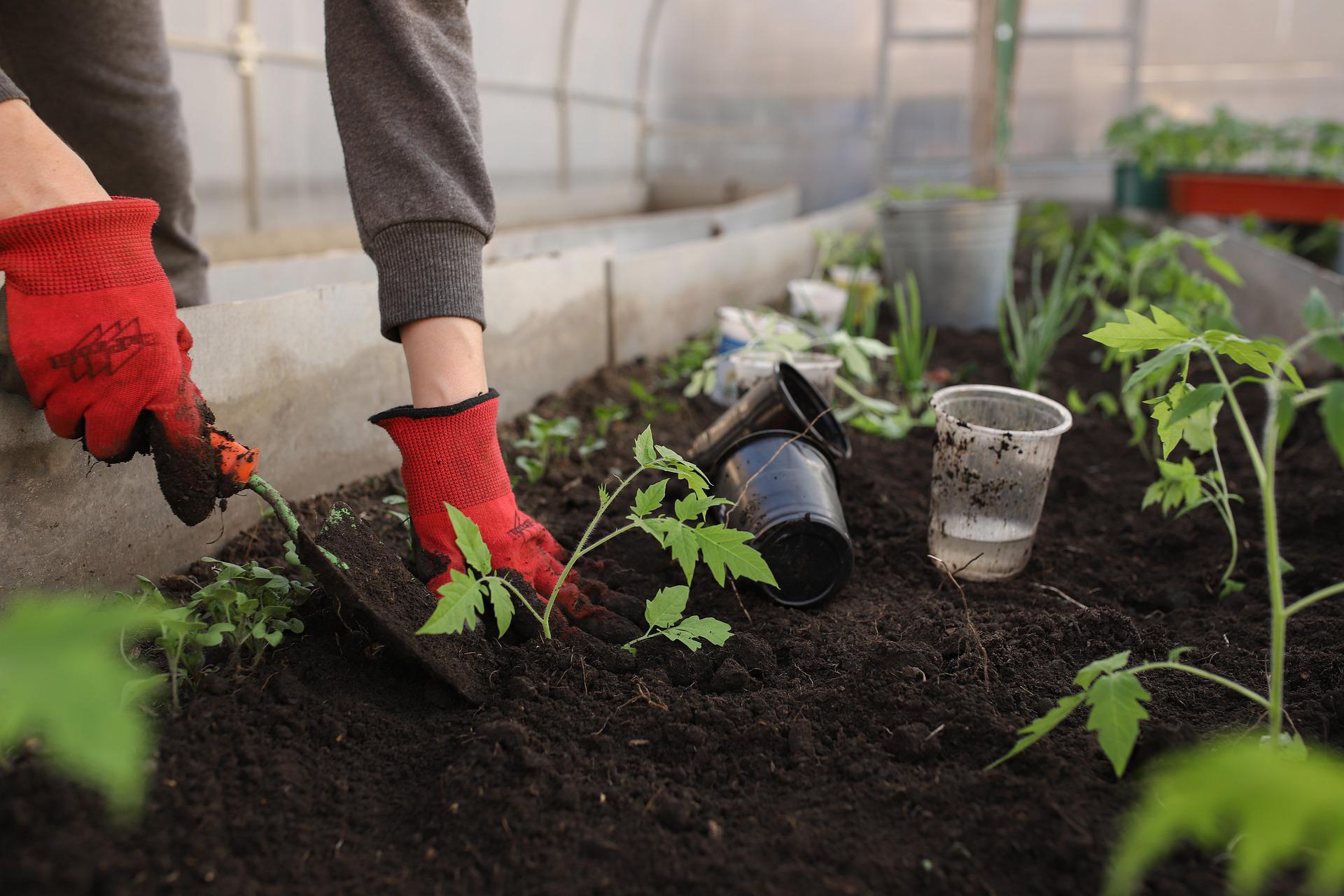If there was no winter or early spring predecessor crop on the area designated for pepper cultivation, the soil should be plowed to a depth of 30 cm in the fall. In the spring, the furrow is closed by disking, and tilling breaks down the soil to a fine or small granular structure at a depth of 10 – 15 cm. It is important to avoid rainfall between tilling and the formation of planting mounds (beds), as this can deteriorate the soil structure and texture, leading to soil compaction and preventing the creation of planting beds. Sowing seeds or planting cucumber seedlings on prepared beds is always preferable to flat surfaces, as beds warm up more quickly and provide better aeration throughout the planting layer.
On large production areas, planting mounds are created using a specialized machine called a bed former (baulator). Measurements should be taken on the plot to ensure the beds are as level as possible, especially the first one in the row, as each subsequent bed aligns with it. The bed height should be between 15 – 25 cm, and the width depends on the type of PVC film used. For single-row film, with a width of 120 cm and hole spacing of 20 cm, the bed width should be 30 to 50 cm. For double-row film, with a width of 130 cm and hole spacing of 30 cm, the bed width should be 40 to 60 cm.
The installation of drip irrigation pipes is carried out during the creation of the beds and before laying the PVC film, and is done automatically. The bed former has holders for the rolls of irrigation pipes. The irrigation pipes are connected to the main line (okiten) using connectors with valves on one side of the bed. On the other end, a knot is tied to prevent water leakage.
The use of polyethylene (PE) film as mulch in vegetable cultivation offers many advantages, including for pepper cultivation. Black films are most commonly used, but transparent and white films (white on one side and black on the other) are also utilized. Films of other colors (brown, yellow, silver, green) have limited use.
Advantages of Using PE Film
- Earlier Harvest – The increased soil temperature under the PE film promotes more intensive growth and development of the cultivated crop, leading to an earlier harvest. Using black mulch can result in an earlier harvest by 7 to 14 days, and using transparent mulch by up to 21 days.
- Reduced Evaporation – Evaporation is reduced under the mulch. The result is higher and more uniform soil moisture compared to uncovered soil. Although soil moisture is conserved by covering the soil, it is necessary to install drip irrigation pipes under the film for successful cultivation.
- Weed Growth Prevention – The use of black or black-and-white mulch prevents sunlight from reaching the soil, inhibiting the growth and development of weeds under the mulch. Under transparent mulch, weeds may germinate, but the high temperature under the film prevents further growth.
- Reduced Nutrient Leaching – Since drip irrigation systems are commonly used under the mulch, which can also be used for fertigation, the necessary nutrients are delivered close to the root system. This reduces the leaching of nutrients into deeper soil layers and groundwater through intense irrigation or rainfall.
- Reduced Soil Compaction and Crust Formation – The soil under the film remains loose and aerated. This is because the paths between the mulch strips are used for access, and heavy rainfall does not disrupt the soil structure. The roots have enough oxygen for growth and development, and microbiological activity in such soil is satisfactory.
- Cleaner and Healthier Produce – The crop covered with mulch is cleaner and less susceptible to pest attacks as there is no contact with the soil. If the surface is not covered, fruits (e.g., cucumbers, strawberries) develop on the soil, which promotes disease development. During heavy rainfall, soil particles can splash onto plants or fruits, reducing quality.
- More Intense Growth – The mulch film is nearly impermeable to carbon dioxide, which is essential for photosynthesis. As the level of carbon dioxide rises under the impermeable mulch, it exits through the openings where the plants are planted and positively affects the intensity of photosynthesis upon contact with the leaves.
The downside of using PE film is the need for removal and disposal, as well as the higher initial investment.













































